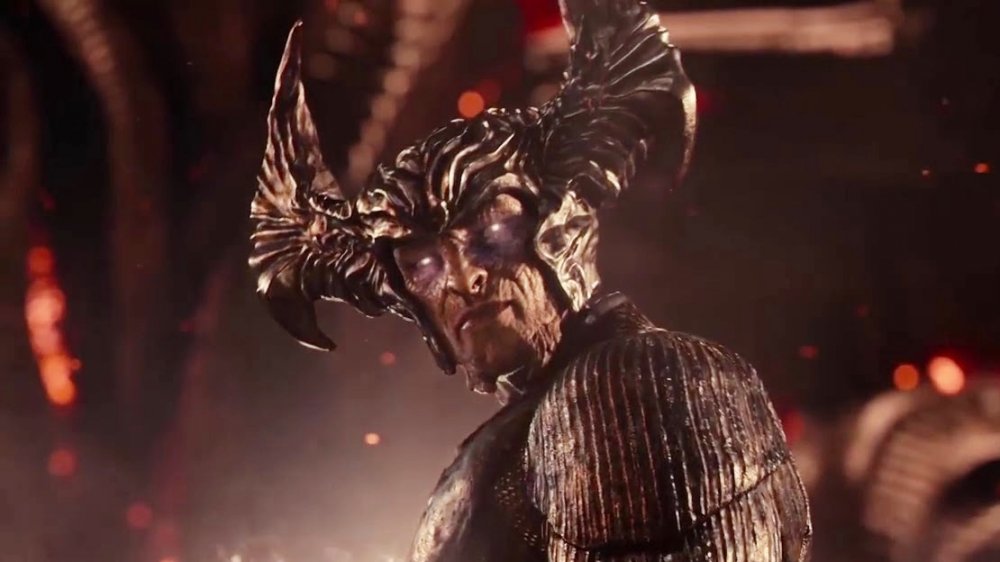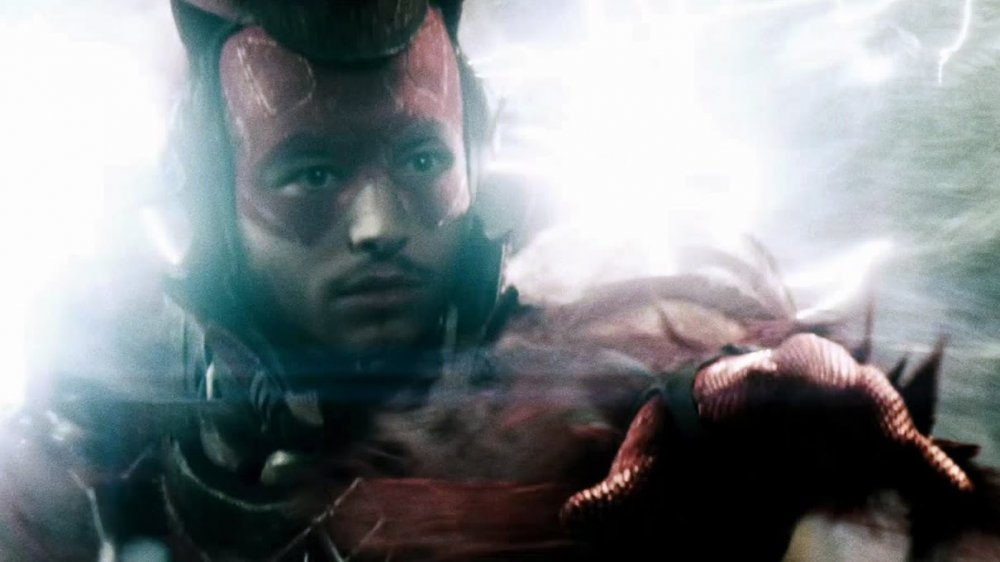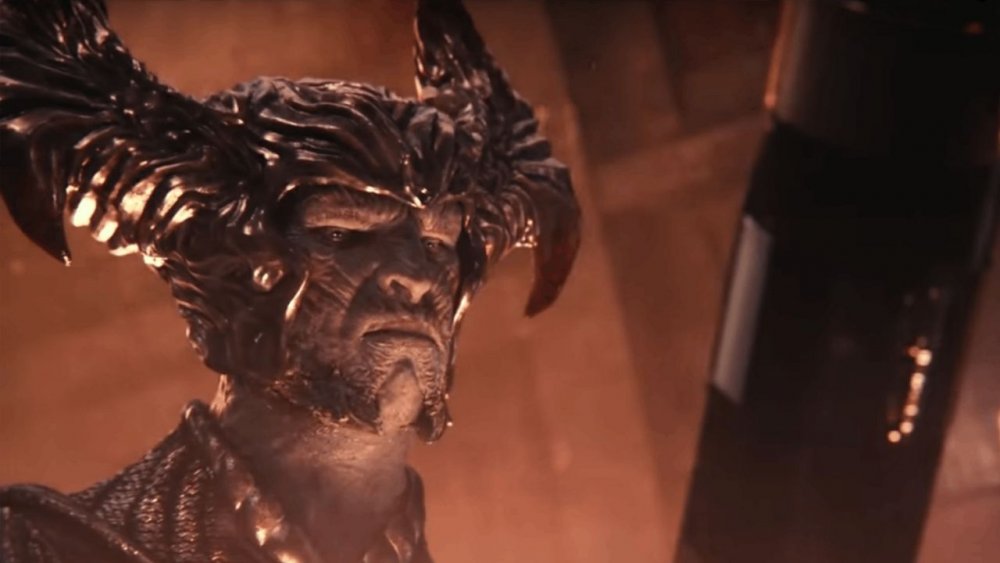The Most Controversial Justice League Changes That May Happen In The Director's Cut
Fans of the DC Extended Universe have accomplished the seemingly impossible: A social media campaign, mounted over the course of the last couple years, has convinced Warner Bros. to #ReleasetheSnyderCut of 2017's Justice League, which will debut on HBO Max sometime in 2021. It's a pretty amazing achievement — but will those fans be entirely happy with what they get?
A brief bit of background: Director Zack Snyder was tasked with guiding the DCEU's shared universe from its inception, and he was at the helm for 2013's Man of Steel and 2016's Batman v Superman: Dawn of Justice. Snyder had planned to introduce more characters via solo movies before orchestrating the formation of DC's iconic superhero team, a story that would have spanned five movies, but the disappointing performance of Batman v Superman prompted Warner Bros. to rework that plan.
Snyder and writer Chris Terrio were given a mandate to rework the Justice League script so that the team-up could happen sooner, and the filmmakers complied, moving forward with a condensed version of Justice League that still would have been several hours long. In the middle of production, though, tragedy struck: Snyder's daughter passed away, and he stepped down from the project, allowing Avengers director Joss Whedon to take over.
Whedon apparently jettisoned huge chunks of Snyder's vision, reshooting up to 80 percent of the film and performing major surgery on the story. The result was a muddled mess that disappointed viewers, failed to make a profit, and left everyone wondering what might have been had Snyder been able to see his vision through.
For better or worse, fans will soon find out. While it's expected that Zack Snyder's Justice League will have a far more coherent vision, there are bound to be a couple of changes from the theatrical cut that fans may not be super fond of.
The Snyder Cut might rely more heavily on time travel as a plot device
In one of the more confusing scenes in Batman v Superman: Dawn of Justice, Bruce Wayne (Ben Affleck) dozes off in the Batcave and has a dream — more of a vision, really — in which he and a band of rebels are fighting a despotic, evil Superman in a post-apocalyptic world. When he wakes, some dude he's never seen before (whom audiences know to be Barry Allen, the Flash, portrayed by Ezra Miller) suddenly shows up to speak to him through some kind of inter-dimensional portal. Barry peppers Bruce with some maddeningly vague instructions along the lines of "Fear him," "Find us," and "Lois Lane is the key" — lamenting that he's come "too far back" before disappearing.
While fans were intrigued to think that the sequence may have been teasing a storyline similar to that of the smash video game Injustice: Gods Among Us – in which Superman, driven mad by the Joker's murder of Lois, rules the world with an iron fist — this turned out to not be the case. Lois was only "the key" in that she was helpful in restoring Superman's memories after his resurrection in the third act of Justice League. Snyder has revealed, though, that Flash was indeed time traveling in this sequence — using the "cosmic treadmill," a device featured in the comics that allows him to focus the Speed Force to travel through time or even between dimensions (via SyFy).
Furthermore, in Snyder's original vision for Justice League, the Scarlet Speedster would have had to do it again (via ScreenRant) — to give Cyborg a second chance after failing to stop Steppenwolf from combining the Mother Boxes during the climactic final battle.
The whole "time traveling to undo catastrophe" angle ended up figuring heavily into Avengers: Endgame — and while this may essentially be a coincidence, fans might not be too psyched to see a major Marvel plot point resurface in Snyder's cut of Justice League.
The fate of Steppenwolf in the Snyder Cut might shock fans
That said, perhaps the single most controversial change we could see — one likely to split fans right down the middle — is the fate of Steppenwolf. In the theatrical cut of Justice League, he was overcome by fear of failure after Wonder Woman (Gal Gadot) destroyed his axe. Smelling this fear, Steppenwolf's own Parademons attack him, and he's knocked back through the inter-dimensional portal from which he came. In Snyder's original vision, though, this played out quite differently. Rather than destroying his axe, Wondy did what Thor should have done in Avengers: Infinity War instead of Endgame: went for the head — actually beheading Steppenwolf before sending him back through that portal in two rather distinct pieces.
It's worth noting that this also echoes a plot point in Endgame (and that if Snyder's cut had been the one released in theaters in 2017, Marvel may have ended up looking like a bunch of copycats). But it also makes for a pretty violent and grim end for Justice League's villain — and with the entirety of the DCEU often coming under fire for its overly dark and gritty tone, it stands to reason that there might be a strong contingent of fans who end up preferring Whedon's climax.
Of course, while Snyder has gone on at length about his vision for Justice League, we won't know what he actually got on film until his cut is released to HBO Max next year. Hopefully, his version of the flick will be much closer to what fans were hoping for. And who knows — if they like it enough, Snyder might even get to continue fleshing out his vision with a sequel.
We'll be keeping an eye out for an official premiere date for Zack Snyder's Justice League, and we'll keep you apprised of any developments.


